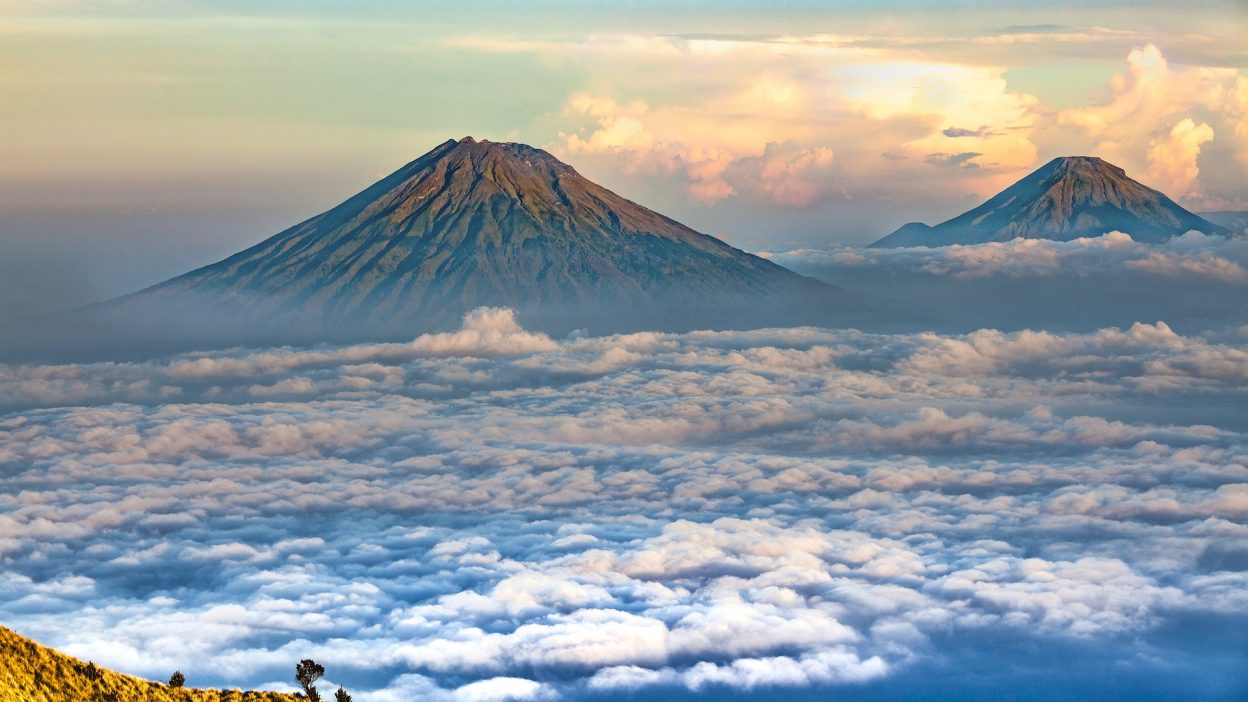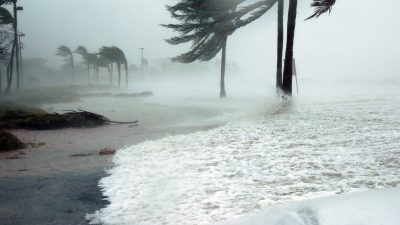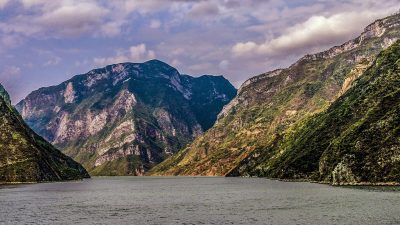The Volcanic Catastrophe That Plunged The World Into Darkness
1. An Explosion Louder Than War: Why Was Tambora’s Eruption So Unprecedented?
In April 1815, a sleeping giant in Indonesia awoke with terrifying force—Mount Tambora, a volcano on Sumbawa Island, unleashed one of the most violent eruptions in human history. The sound of the explosion was so loud that it was heard 2,000 km away in Sumatra, where British soldiers mistook it for cannon fire from an invading fleet. This wasn’t just a local catastrophe—Tambora’s eruption was classified as VEI-7 (Volcanic Explosivity Index), making it one of the largest eruptions in at least 10,000 years.
The sheer energy of the eruption is hard to comprehend. It ejected nearly 160 cubic kilometres of rock, ash, and gas into the atmosphere—equivalent to 52 billion tonnes of TNT exploding at once. The ash cloud that spewed into the sky blocked sunlight, creating a dense, suffocating darkness that lasted for days. This wasn’t just an eruption—it was a world-changing disaster that left no continent untouched.
2. The Perfect Storm: How Tambora’s Eruption Unfolded in Stages
The devastation of Tambora was not instant—it built up over several years. The first signs of trouble appeared in 1812, when small tremors and plumes of smoke were noticed. At the time, people saw it as nothing unusual, as the region was known for volcanic activity. However, by April 1815, the warning signs had become impossible to ignore.
On 5 April, the volcano had a massive explosion, sending thick columns of ash into the air. Villagers in the surrounding areas reported thunderous sounds, followed by a fiery glow in the sky. However, what followed on 10 April was beyond imagination.
- At 7 PM, Tambora detonated with apocalyptic force. Rivers of molten rock flowed down the mountainside, and pyroclastic flows—superheated clouds of gas and ash—began racing down at speeds of over 700 km/h, incinerating everything in their path.
- By midnight, the eruption had reached its peak intensity. The plume of ash and gas had climbed to an astonishing 43 km into the sky, sending lightning storms flashing through the clouds of debris.
- Over the next few days, entire villages disappeared, buried under layers of hot volcanic ash. Survivors reported suffocating under falling debris, while others were trapped in burning houses as they screamed for help.
By the time the eruption ended, nothing remained of the once-thriving settlements near Tambora. The landscape was unrecognisable, transformed into a wasteland of ash, rock, and death.
3. A Death Toll Beyond Imagination: The Forgotten Victims of Tambora’s Wrath
- Instant Deaths: Within minutes of the eruption, 10,000 people were killed as their homes were obliterated by pyroclastic flows and falling debris. Many died instantly from the extreme heat, while others suffocated in the ash-filled air.
- Starvation and Famine: The volcanic ash poisoned crops and water sources, leading to widespread food shortages. In the months that followed, another 80,000 people perished due to famine and malnutrition.
- Global Impact on Human Life: The eruption didn’t just affect Indonesia—it disrupted agriculture worldwide. In places as far as China, India, and Europe, crops failed, and millions suffered from food shortages. The global famine led to further disease outbreaks, pushing the real death toll even higher.
- Uncounted Casualties: While official records suggest 90,000-100,000 deaths, many historians argue that the true number of affected individuals was far higher. The indirect consequences of the disaster—famine, disease, economic collapse—meant that millions felt Tambora’s impact.
4. A World Without Sunlight: How Tambora’s Eruption Changed Global Climate
The eruption of Mount Tambora was not just a local catastrophe—it altered the Earth’s climate. When the volcano erupted, it released millions of tonnes of sulphur dioxide into the atmosphere, creating a global haze that blocked sunlight.
This led to the infamous “Year Without a Summer” (1816). Across Europe, Asia, and North America, temperatures plummeted. Farmers watched in horror as snow fell in June, frost destroyed their crops, and the skies remained darkened for months. The result? One of the worst famines of the 19th century.
- China and India suffered from failed monsoons, triggering devastating floods and droughts.
- Europe saw food prices skyrocket, leading to widespread riots and social unrest.
- North America experienced deadly cold waves, with many regions reporting freezing temperatures in mid-summer.
The aftermath of Tambora’s eruption lasted for years, proving how a single volcanic explosion could throw the entire planet into turmoil.
5. More Than Just Lava: The Many Ways Tambora Wiped Out Civilisations
Mount Tambora’s eruption unleashed a combination of deadly forces, each of which played a role in the destruction:
- Pyroclastic Flows: These fiery clouds of gas and ash, moving at over 700 km/h, incinerated entire towns in seconds.
- Tsunamis: The collapse of the caldera triggered massive waves that swept coastal villages into the sea, killing thousands.
- Ashfall and Poisoned Water: Volcanic ash contaminated water sources, leading to widespread disease outbreaks.
- Acid Rain: The sulphuric gases in the atmosphere caused acid rain to fall for weeks, further damaging crops and homes.
6. A Lost Kingdom: The Cities That Were Wiped Off the Map
One of the greatest historical tragedies of Tambora’s eruption was the complete disappearance of an ancient kingdom. The Kingdom of Tambora, a flourishing civilisation with its own language, culture, and trade networks, was entirely buried under volcanic ash.
For nearly 200 years, the lost kingdom remained forgotten—until archaeologists discovered perfectly preserved ruins, similar to those found in Pompeii. Human skeletons, pottery, and tools lay frozen in time, offering a haunting glimpse into a civilisation that vanished overnight.
7. Could Tambora Have Triggered Other Global Disasters?
- First Climate Refugees: Many survivors of the famine were forced to migrate, becoming some of the earliest climate refugees in history.
- Economic Collapse: The food shortages led to widespread poverty, making it one of the biggest economic disasters of the 19th century.
- Warnings for the Future: If a similar eruption occurred today, experts warn it could destabilise entire nations, causing mass food crises and economic breakdowns.
8. Could Another Supervolcano Erupt in Our Lifetime?
The world is still home to several supervolcanoes that could dwarf Tambora’s eruption. Scientists are closely watching:
- Yellowstone (USA) – A potential VEI-8 eruption, which could trigger a global catastrophe.
- Toba (Indonesia) – This massive supervolcano last erupted 74,000 years ago, nearly wiping out humanity.
- Campi Flegrei (Italy) – A restless supervolcano under Naples, which could threaten millions if it erupts.
9. Lessons from Tambora: Are We Prepared for Another Mega-Eruption?
Despite our technological advancements, humanity remains alarmingly unprepared for an eruption of the same magnitude as Mount Tambora. If such a catastrophe were to happen today, the consequences would be far more devastating than in 1815. Why? Because the world is now interconnected, with nations relying heavily on global food supply chains, transportation, and technology—all of which would be severely disrupted.
Experts warn that a supervolcanic eruption could trigger widespread crop failures, economic meltdowns, and mass migration. The 1815 eruption of Tambora caused global famine, but at that time, the world’s population was less than 1 billion. Today, with over 8 billion people, the impact would be catastrophic.
Governments have disaster response plans for hurricanes, tsunamis, and earthquakes, but few have strategies for a global volcanic winter. Scientists argue that we need better monitoring systems, stronger food reserves, and international cooperation to prevent another Tambora-level disaster from spiralling into global chaos. The question remains: Will we be ready when the next supervolcano awakens?
10. The Voices of the Forgotten: The Survivors’ Stories That Still Haunt Us
For the tens of thousands who perished in the immediate aftermath of Tambora’s eruption, their voices were lost to history. But for the few who survived, their testimonies paint a picture of unimaginable horror—a world swallowed by fire, ash, and darkness.
Eyewitnesses spoke of days without sunlight, where the sky turned black, the air burned their lungs, and the ground rumbled like thunder. Survivors in distant islands choked on ash, while those closer to the volcano were entombed under falling debris. Some described seeing friends and family burn alive, their screams echoing through the suffocating night.
For months, people wandered the ash-covered wasteland, searching for lost loved ones, only to find entire villages erased from existence. The Kingdom of Tambora, a thriving civilisation, vanished completely, its culture, language, and people reduced to forgotten relics beneath layers of volcanic rock.
Today, the remains of this lost world continue to be unearthed, much like Pompeii, revealing the lives that were suddenly and violently cut short. Their tragedy stands as a warning to us all—that nature, when awakened, does not discriminate, does not warn, and does not forgive.
FAQs
1. How many people died in the Mount Tambora eruption?
Over 100,000 people died due to the eruption, but the real death toll is likely much higher when considering famine, disease, and global climate impacts.
2. Why did Tambora’s eruption cause a “Year Without a Summer”?
The eruption spewed massive amounts of sulphur dioxide into the atmosphere, which formed a thick haze that blocked sunlight, causing global temperature drops and widespread crop failures.
3. Could a similar eruption happen again today?
Yes. Several supervolcanoes, such as Yellowstone (USA) and Toba (Indonesia), have the potential to cause global climate disruptions similar to Tambora.
4. Was Tambora the biggest volcanic eruption in history?
It was the largest recorded eruption in modern history, but prehistoric eruptions, like the Toba eruption 74,000 years ago, were likely even more powerful.
5. How did the Tambora eruption affect Europe?
Europe experienced freezing temperatures in summer, leading to failed harvests, food shortages, and riots. The disaster crippled economies and caused mass starvation, with some areas suffering for years.




